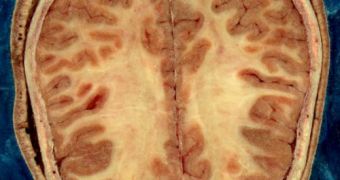In a finding that could literally change the way kids look at parents and vice-versa, researchers have discovered that children's brains indeed appear to perceive and process things differently.
The new data helps explain why children and their parents usually don't see eye to eye. According to the team behind the investigation, the correlations holds true for kids aged below 12.
It could be that the ability children have of separating visual information into their individual components is a way for them to fine-tune their visual systems for when they grow up, experts say.
Details of the new investigation appear in the September 13 issue of the esteemed journal Proceedings of the National Academy of Sciences (PNAS).
Unlike children, adults tend to perceive and combine all visual information into a single, unified view. This allows them to be more alert, and also attentive to their surroundings.
According to previous investigations, sensory information does not begin to be fully integrated in the human mind until the child reaches 8 years of age.
It is widely believed that, before that time, the information that sense give children (sight, hearing, smell and touch) is not integrated in the same complete manner as it happens in the adult brain.
Vision can be analyzed by assessing the degree of detail people see in objects – closer things have more details – as well as by looking at the small disparities that appear in the data supplied by each eye.
In the new experiments, researchers asked kids and adults to wear 3D glasses, and then look at two slightly slanted surfaces. The goal was to determine which one appeared to be the most flat to each age group.
The new work was conducted by a collaboration of experts from the University College London (UCL) and Birkbeck, University of London (BUL), LiveScience reports.
One of the most interesting conclusions of the new study is the fact that adults appear to be unable of untangling the unified perception of things they have, once the visual data have been merged into the mix.
This is a disadvantage, experts say, as kids seem to be able to do this. “Babies have to learn how different senses relate to each other and to the outside world,” says BUL Center for Brain and Cognitive Development expert Denis Mareschal.
The scientist, who was also a coauthor of the PNAS paper, adds that “while children are still developing, the brain must determine the relationships between different kinds of sensory information to know which kinds go together and how.”
“It may be adaptive for children not to integrate information while they are still learning such relationships,” Mareschal concludes.

 14 DAY TRIAL //
14 DAY TRIAL //